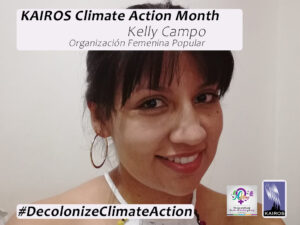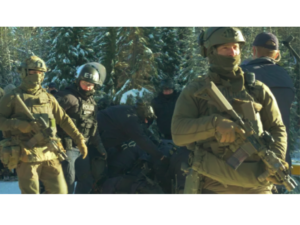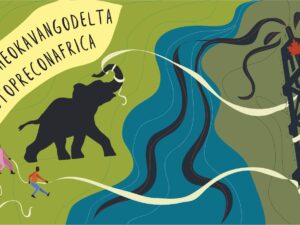Ecuador’s Oil Struggle: Reflections on an Amazonian Journey
In July 2011, KAIROS staff Rachel Warden and Sara Stratton, together with Fort Chipewyan activist George Poitras, travelled to Ecuador to learn more about the impacts of oil exploration on the Indigenous peoples and ecosystems of Ecuador’s Amazon region. The following is Sara’s reflection in words and images of her time in Ecuador.
Canadian church leaders and KAIROS partners from Nigeria and Ecuador had been hosted by George and his community when the KAIROS Church Leaders’ Delegation to the Tar Sands visited Northern Alberta in May 2009. We were eager to continue building on that relationship, particularly between peoples of the global South and the global South in the North.
As part of our Ecuador experience, KAIROS partner Acción Ecológica arranged for us to be part of a “Toxi Tour” with a group of Ecuadoran youth and Latin American environmental activists. Rachel and I had an interest in this because of our jobs as educators and advocates for human rights and ecological justice. George had an interest as a community leader in Fort Chipewyan’s struggle for justice with the oil companies working the tar sands of Northern Alberta.
We traveled by overnight bus to Lago Agrio, a town in Sucumbios province, the heart of Ecuador’s oil industry. When oil was discovered in the 1960s, the Ecuadoran government and corporations such as Texaco and Gulf supported the establishment of towns and drill sites in this supposedly empty area. But of course the area was not empty; it was populated by many Indigenous communities such as the Cofan.
For 40 years, Indigenous peoples and the settler community have been living in the middle of an industrial zone in the middle of the jungle. Now they are living with the industry’s wasteful legacy: tailings ponds and gas flares in the middle of farms, dirty rivers from which to draw water and wash clothing, polluted wells. People have been uprooted from their poisoned farmland only to find themselves in communities built on contaminated soil or abutting an unregulated dump that receives household, industrial, and hospital waste. We witnessed a truck full of waste petroleum pull up to a pond and prepare to dump until it saw our group of 30 … with cameras. The drivers quickly decided that they had come to this filthy pond to wash the truck instead.
We travelled to the Rukullakta region, where the community is struggling to decide whether or not they want to allow a Canadian company in to extract the heavy oil that lies beneath their land. We found a community torn between the need to protect its traditional territories and the need to put food on the table. This is a struggle faced by Indigenous peoples all over the world. We also travelled down the Napo and Yasuni rivers to the Yasuni nature reserve – an amazingly verdant chunk of the rainforest that is home to the Indigenous Huaroni people and so full of tropical flora and fauna that some have deemed in the most biologically diverse place on earth. UNESCO has named the Yasuni a world biospehere reserve. Yet the Yasuni is also full of oil, some of which is already being extracted. The SOS Yasuni campaign has been formed to try and wrest this important global resource back from the oil companies and keep the oil in the ground, thereby preserving this amazing natural legacy for future generations.
We have prepared a slide show of some of what we saw on the journey. These pictures tell the terrible story of a land destroyed and people harmed by our thirst for oil, and our failure to take responsibility for its true costs. They also show a glimpse or two of Ecuador’s amazing beauty and the strength and resilience of its people as they struggle to find their place within –or perhaps outside of– the oil economy. There are no easy answers to the difficult questions that oil exploration raises. Had the oil company that created the situation in Lago Agrio acted more responsibly, it probably would not have had an $8 billion judgment made against it in a class action law suit. Had the company which inherited the problem apologized, it might have avoided seeing that judgment double in size. As for us, individual and community consumers of oil, what can we do? Can we use less? Can we pay the price for what we do use? We invite you to take a look at our slide show and think about our place in Ecuador’s oil struggle.












